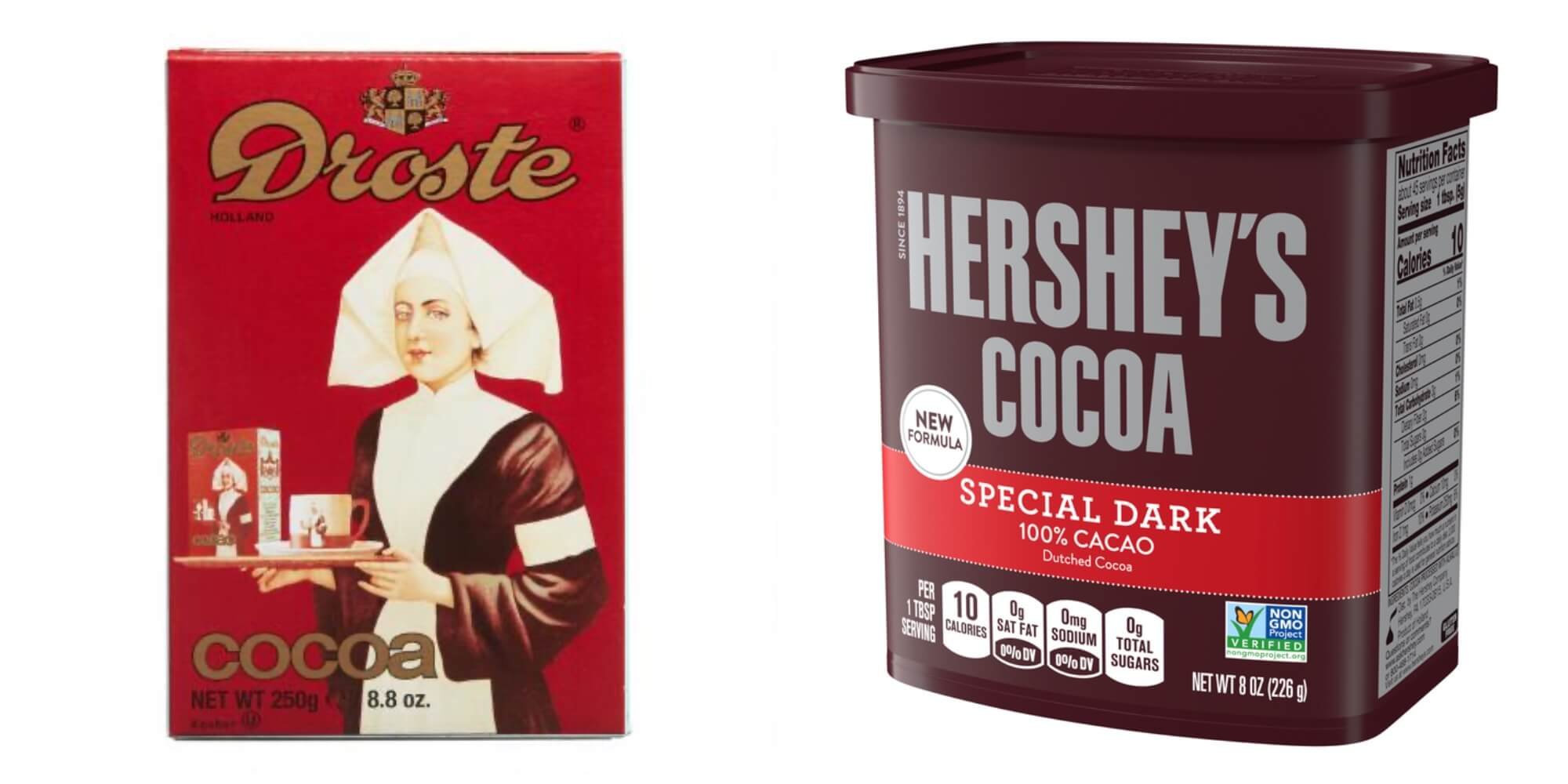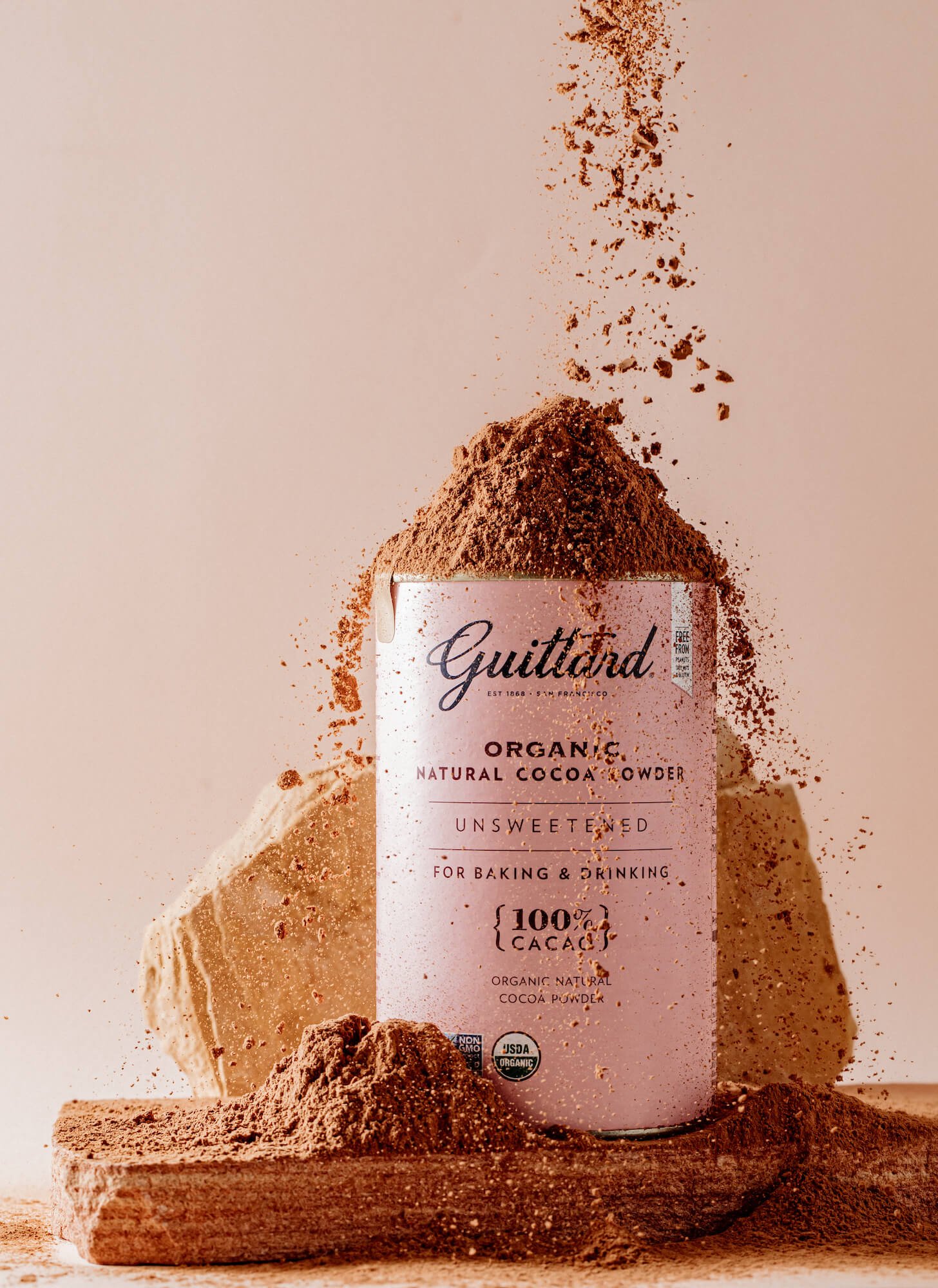What Are the Differences Between Dutch Process & Natural Cocoa Powder?
Cocoa powder is used in a wide variety of recipes, from hot cocoa drinks to ice cream, brownies, frostings, and cakes. But not all cocoa powder is the same. Even in the supermarket you are likely to find a baffling array of options. The main types of cocoa powder are Dutch process and natural. But what is the difference between them and more importantly, when should you use one versus the other?
What is Cocoa Powder?
Cocoa powder is produced from grinding processed cocoa solids or cocoa liquor, after most of the cocoa butter is removed. Typically, the fat content of cocoa powder is 10–24%.
What is Dutch Process or Alkalized Cocoa Powder?
Dutch cocoa powder is washed with an alkaline solution that neutralizes cocoa's acidity to a pH level between 6 and 8. It is named for Coenraad Johannes van Houten (1801-1887), the son of the Dutch chocolate maker Casparus van Houten who invented the technique. The result is a darker colored powder, but a milder flavor. Droste is a brand of Dutch process cocoa powder, as is Rodelle and Hershey’s “Special Dark.”
Guittard Chocolate Company Natural Cocoa Powder photo credit Guittard Chocolate Company
What is Natural Cocoa Powder?
By contrast, natural cocoa powder is not alkalized. It has a more acidic pH range of 5-6 and is much lighter in color. It has more of the fruity acidic flavors of citrus. A word of caution about finding natural cocoa powder. Some cocoa may not be labeled natural, but rather unsweetened or baking cocoa. Hershey’s, Nestle and Ghirardelli are all natural cocoa powders.
Which Cocoa Powder is Better?
Guittard Chocolate Company Cocoa Powders photo credit Guittard Chocolate Company
Knowing the difference between Dutch process and natural cocoa is not the only key to the puzzle in deciding which to use in cooking and baking. Some cocoa powders include ground chocolate, sugar and may have differing amounts of cocoa butter. Long-time cookbook author/dessert chef, and James Beard Award winner, Alice Medrich, favors Guittard Chocolate Company cocoa powders and has on occasion consulted with them. Over many years of working with chocolate, she has also developed deep appreciation for the differences between Dutch process cocoa powder and non-Dutch cocoa powder, in terms of color and taste.
Operating in San Francisco since the late 1800s, Guittard recently released its non-Dutch Organic Natural Cocoa Powder. “Our retail line consists of three cocoa powders,” explains Amy Guittard, Chief Marketing Officer for the company. “Our Cocoa Rouge is a Dutch-processed powder versus our Organic Natural Cocoa Powder which is natural; We also have Grand Cacao which is a unique combination of Dutch-processed powder, chocolate, and sugar. All are great for baking and drinking.” She adds that on the food service side of their business they have an extended array of cocoa powders that are suited for a variety of applications – with varying degrees of dutching as well as fat content.
Differences in taste & appearance
While you can’t always use Dutch-processed and natural cocoa powder interchangeably, knowing when you can, and just how using each one will impact the result, is key, says Guittard. “Having both on hand will open up a wide world of creativity in the kitchen.”
Both Dutch processed and “natural cocoa” are unsweetened, strong, and bitter, when tasted alone. “Natural cocoa is usually going to be lighter in color and it may look less chocolatey,” Medrich says. “Dutch-processed cocoa powder may go all the way to almost charcoal in color. Black cocoa is Dutch process cocoa taken to the extreme, such as an Oreo cookie and, to me, it tastes like no chocolate, at all.”
Dutch process cocoa powder results from interaction of the cocoa and an alkaline solution such as potassium or sodium carbonate, which reduces acidity and complexity in the powder. This process creates a mellow, toasted, often nutty flavor when used in recipes. “Some people identify Dutch process flavor with chocolate,” Medrich says, adding “To others, natural cocoa powder has more of the flavors of chocolate. I think it also has more of the range of aromas that you’ll find in good chocolate. Some preferences we have for chocolate reflect our history and evolving tastes.” She adds, “I’ve lately realized that, if you have followed craft chocolate for the last 20 years, you’ll more likely pick up on the full range of flavors and aromas of good chocolate in natural cocoa powder.”
Guittard emphasizes that their Organic Natural Cocoa Powder uses a blend of beans that yields “A really bright and fruity acidity that really comes to life when used in recipes.”
Dutch Versus Natural Cocoa Powder in Recipes
A good baking recipe should indicate a particular type of cocoa powder and a good baker will make the same choice. But American recipes that don’t specify which cocoa powder to use are typically written for natural cocoa.
Baking powder or soda causes baked goods to rise. Baking powder contains an acid and a base, whereas baking soda is alkaline only and requires an acid to fully activate. That’s why Dutch process cocoa based recipes typically use baking powder, while natural cocoa works best with baking soda.
For the many chocolate recipes that don’t require leavening, cooks can choose what variety of cocoa powder they prefer. Recipes for ice cream, sauces, or buttercream can incorporate either style of cocoa powder, although color and flavor differences will remain when using Dutch-process versus natural cocoa powder. “It’s the area where I kind of like to play,” Medrich says, such as making the same brownie recipe twice and using each variety of cocoa powder. “I will use the correct cocoa for leavening, but I love that area where I can choose [the cocoa powder style], and I tend to like natural cocoa.”
Health Benefits of Cocoa Powder
Cocoa powder can help support cardiovascular health, balance cholesterol, reduce diabetes risk, bolster cognition and even support weight loss, however research indicates that dutching decreases its antioxidant properties, polyphenols, flavanols, and fatty acids. Read more about chocolate and health.





